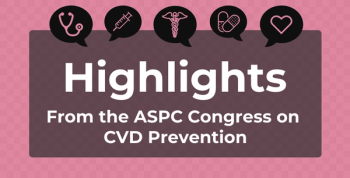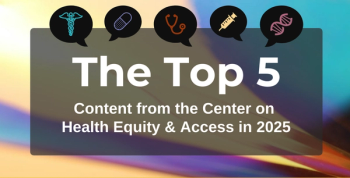
Baricitinib Leads to Significant Hair Regrowth in Adolescents With Severe Alopecia Areata
Key Takeaways
- Baricitinib showed significant hair regrowth in adolescents with severe alopecia areata, with 71% achieving successful scalp regrowth at 52 weeks on a 4 mg dose.
- The study highlighted the importance of early intervention, with better outcomes in patients with severe, but not total, hair loss.
In the phase 3 BRAVE-AA-PEDS trial, baricitinib led to significant scalp, eyelash, and eyebrow hair regrowth at 1 year in adolescents with alopecia areata.
Baricitinib (Olumiant; Eli Lilly), an oral Janus kinase (JAK) 1/2 inhibitor, led to significant scalp, eyelash, and eyebrow hair regrowth at 52 weeks in adolescents with severe
In the phase 3 BRAVE-AA-PEDS study (
"For nearly half of the people with severe alopecia areata, the disease starts before adulthood and can progress quickly, significantly impacting patients' lives," Nicole Friedland, president and CEO of the National Alopecia Areata Foundation (NAAF), said in a statement.1 "Given the profound burden of this disease, new treatment options are needed for children and adolescents, populations that have been underrepresented for far too long."
The BRAVE-AA-PEDS study represents the largest phase 3 clinical trial of its kind focused on adolescents with severe alopecia areata, according to the press release. Severe alopecia areata is defined as a Severity of Alopecia Tool (SALT) score of 50 or greater, indicating at least 50% scalp hair loss.
At baseline, the enrolled patients showed an advanced disease burden, with participants averaging 89% scalp hair loss. Nearly two-thirds (63.8%) were classified as having very severe disease (SALT score of 95-100). At 52 weeks, patients receiving baricitinib demonstrated a clear, dose-dependent response, with 54.1% of adolescents receiving the 4 mg dose of baricitinib achieving successful scalp hair regrowth, defined as 80% or greater hair coverage (SALT score ≤ 20). Furthermore, 41.2% of patients in the high-dose cohort achieved near-complete regrowth, characterized by 90% or more scalp hair coverage (SALT score ≤ 10). By comparison, the 2 mg dose cohort saw 31% and 26.2% achieve the SALT ≤ 20 and SALT ≤ 10 end points, respectively.
A subset analysis underscored the value of earlier intervention, suggesting that the clinical benefit is amplified in patients with severe, but not total, scalp hair loss. Among those with a baseline SALT score between 50 and 94, 71% of patients on the 4 mg dose achieved successful hair regrowth at 1 year.
Beyond the scalp, the study documented a meaningful impact on other areas crucial to patient quality of life and psychosocial well-being. Significant regrowth of eyebrow hair was observed in 64.8% of patients on the 4 mg dose, and 63.3% experienced eyelash regrowth. These data are important, as the psychological burden of AA, particularly in adolescents, is well-documented, with hair loss often leading to high rates of stress and social stigma.2
The drug’s safety profile over 52 weeks in the adolescent cohort was found to be consistent with the established data observed in adult trials for alopecia areata and other indications.1 The most common treatment-emergent adverse events reported were generally mild and included acne, upper respiratory tract infection, and influenza, and no new safety signals emerged during the study period. No opportunistic infections, major adverse cardiovascular events, or venous thromboembolic events were reported.
"These promising results for adolescents reinforce what we see in clinical practice with adults, which is that starting treatment with baricitinib early can lead to higher rates of scalp hair regrowth, including near-complete regrowth for many patients," Brittany Craiglow, MD, adjunct associate professor of dermatology at the Yale School of Medicine, said.1 "Systemic treatments for adolescents shouldn't be the last resort, but part of the treatment conversation among doctors, caregivers and patients from the beginning."
References
1. Lilly's baricitinib delivered near-complete scalp hair regrowth at one year for adolescents with severe alopecia areata in phase 3 BRAVE-AA-PEDS trial. Eli Lilly. October 24, 2025.
2. Tan IJ, Jafferany M. Psychosocial impact of alopecia areata in paediatric and adolescent populations: a systematic review. J Paediatr Child Health. 2024;60(12):778-782. doi:10.1111/jpc.16678
Newsletter
Stay ahead of policy, cost, and value—subscribe to AJMC for expert insights at the intersection of clinical care and health economics.








































